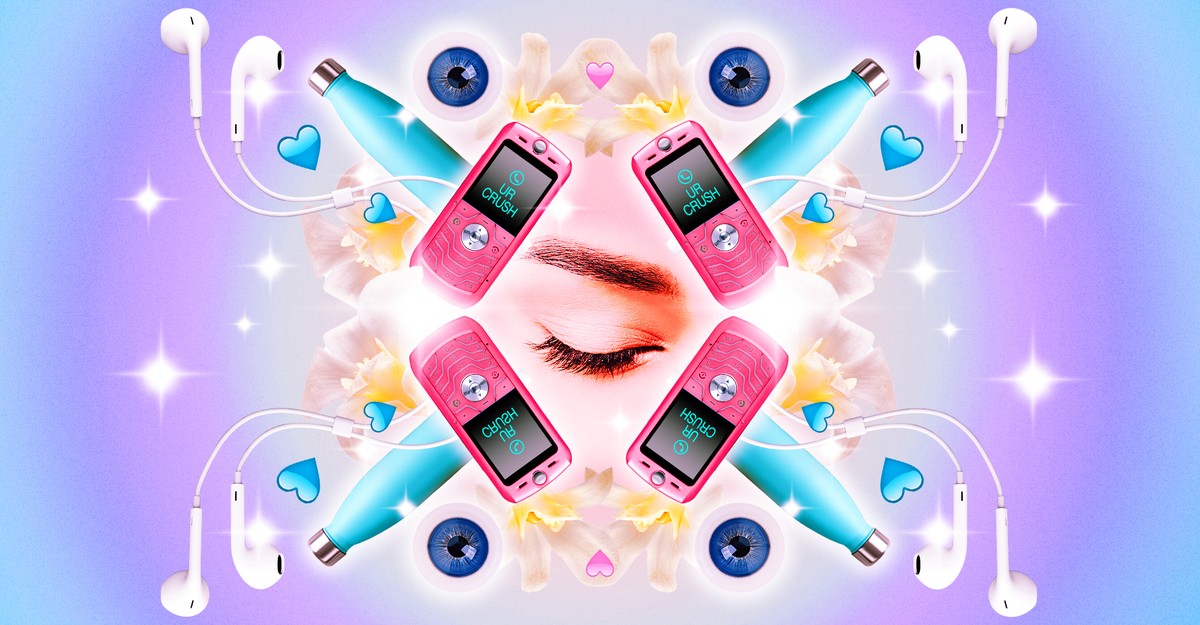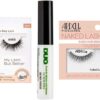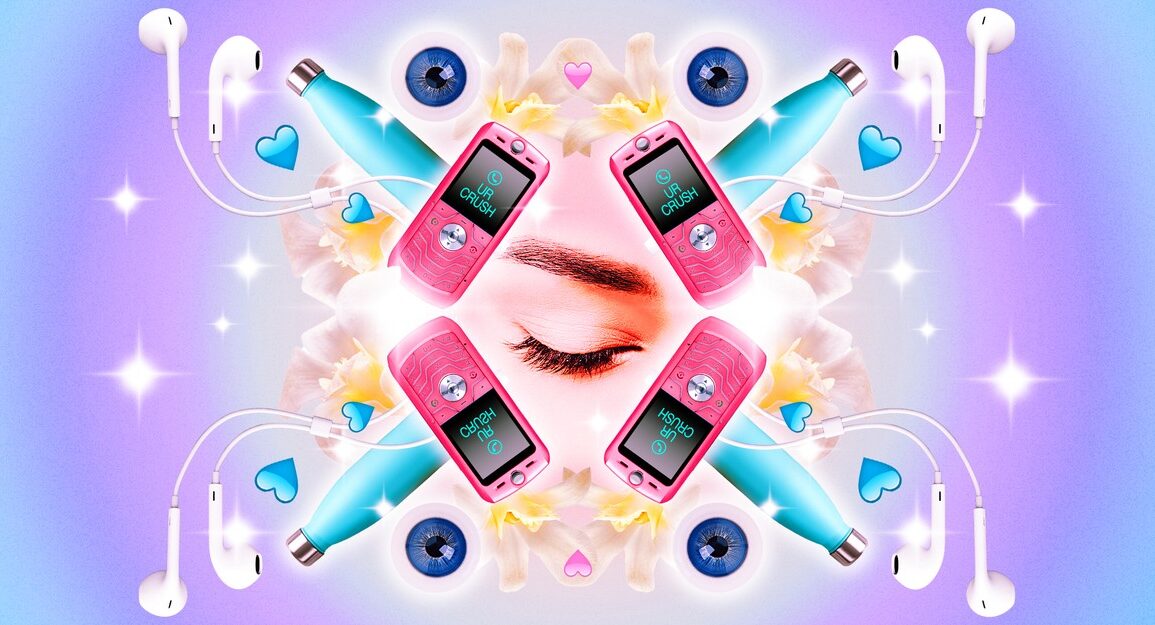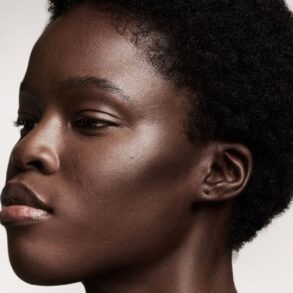
In the world of high school, every day is a battle. Recently, one of the most intimidating foes is the air. “School air,” as they call it on social media, is the latest way to explain the universal feeling of not looking your best at school. It smudges your makeup. It gives you awful hair days. It makes you look “dull” and “bad.”
But it might not be so much of a problem if you watch the right videos. Dozens or hundreds of them are on YouTube and TikTok—with titles such as “school air?? what is that?” or “school air just makes me look prettier”—and some have millions of views. Through their sound, these short clips are meant to send subliminal messages to the brain that will somehow make high schoolers look better. Each one details the “benefits” that will manifest after watching: For example, “your makeup always looks flawless” and “your skin always looks flawless” and “you look 100 times prettier at school” and “people wonder how ‘school air’ doesn’t affect you.” It’s not science. It’s magic.
These videos aren’t a joke. They are actually meant to work. “Subliminals” have been around for several years in secluded corners of YouTube, but they have recently found a whole new audience on TikTok, made up overwhelmingly of teenagers and young women. The genre has its own look and feel, with imagery that resembles a Pinterest mood board and audio that is usually a popular song or rain or campfire sounds laid over a quiet voice speaking “affirmations.” Some make funny but harmless guarantees: Listen to them and your crush will text or call “IMMEDIATELY.” Others are fantastical, promising to perfect a listener’s teeth with “virtual braces.” A smaller number are troubling: Subliminals promising to make listeners “underweight” or “scarily thin,” or claiming to change people’s race, have been taken down from YouTube.
You can probably find a subliminal for just about any personal change you can imagine. There are even a bunch for developing a permanent vanilla scent. “Smells like Vanilla in 1 Hour ✧ subliminal (listen once),” for example, is an 11-minute-11-second video of a cat sitting in a dryer while soft music plays and someone very quietly says “smells like vanilla” and “wrist smells like vanilla” and “neck smells like vanilla” and so on. The video comes with instructions: Put the volume between 20 and 60 percent while you listen. Listen once a day. And drink two cups of water before and after listening.
The one thing every subliminal diehard agrees on is that you must stay hydrated. “Drink water!” YouTube descriptions often instruct. This is because your head will hurt from listening to sounds that are meant to create such significant change. Your nose may also hurt if you listen to intense nose-shrinking subliminals, so for that you can take Tylenol. Subliminal creators and users congregate on Reddit, where they trade tips on how to best create and use subliminals. Many of them have spent several years experimenting—they arrange the clips into playlists, talk through how to remove “blocks” in their mind that prevent the messages from sinking in, and calculate the ideal number of times to listen to allow the audio to truly sink into the subconscious and start triggering change.
“I personally believe that we can achieve amazing things by tapping into our subconscious mind,” Michelle Cohen, a 20-year-old subliminal maker from Sweden, told me. One of the first videos she tried was meant to improve her skin, and she said it worked. She hadn’t changed anything about her skin-care routine, but her face was clearer within a week. This doesn’t make any sense scientifically, she acknowledged, but suggested that maybe she will learn more about this after she gets into medical school.
TikTok’s powerful recommendation algorithm seemingly has made subliminals go mainstream recently, along with the platform’s supernatural culture: Influencers talk about manifestation as if it’s natural, and girls on TikTok are guided through their daily lives by angel numbers. Subliminals are now so massive that some video creators are earning significant money off of them. @lolabunni, a 21-year-old subliminal maker from Tbilisi, Georgia, makes about $1,000 each month in YouTube ad revenue from her subliminals, which is her primary income. (I’m identifying @lolabunni by her YouTube username to protect her privacy.) She said she doesn’t understand why subliminals would work, but she truly believes that they do.
@lolabunni is not popular among other subliminal creators because she also posts her videos to TikTok, where creators think the clips are seen by far too big an audience. As the interest in subliminals has grown, those in the Reddit community have been talking about the urgent need for gatekeeping (and a “gatekeeping” subliminal, naturally); I was banned from their forum after I messaged some members about interviews for this story.
Though subliminal adherents tolerate doubt, they counter with testimony about results. In a Reddit thread from November, one person claimed to have achieved dozens of changes, including bigger eyes, a flat stomach, a better temper, less body odor, nicer parents, and higher pain tolerance. Sophie Lewis, an 18-year-old subliminal maker from the United Kingdom, tries to be realistic about what she can get from subliminals. “You can see what you want to see,” she told me. “If somebody’s trying to change their eye color, they can look really intensely and see that one tiny speck of a lighter color and be like, ‘Oh, this is working.’ But I think mainly subliminals really work when they’re for things that aren’t really tangible. Things like confidence, things like money.” Still, she used to take paid requests to make videos that could do just about anything, such as give you “anime eyes” and the “ultimate big butt.”
These girls, of course, did not invent the concept of subliminal messaging. The Cold War heightened widespread fear of mind control, and advertising executives started insisting on the ability to manipulate people with subconscious cues. By the 1980s, it had turned into a huge business: Subliminal audiotapes purported to use whispered affirmations to help people overcome fears, addictions, past lives, and reluctance to do their housework. Through successive studies, research psychologists determined that audio subliminal messages couldn’t help athletes perform better or get people to lose weight. But they could kind of work through placebo effects. People who thought they’d listened to a tape with affirmations to help improve memory or self-esteem saw some results, even if they hadn’t been listening to that kind of tape at all.
If none of the subliminals popular on YouTube and TikTok today will deliver the physical results they promise, they can get young people to dwell for hours at a time in their least healthy thoughts. Sometimes a well-known subliminal maker is suddenly suspected of putting secret language in her videos that causes hallucinations or makes someone “lose their soul, and things like that,” Lewis said. These incidents are much less disconcerting than, say, the weight-loss subliminals, which have not all been removed by YouTube. I recently found clips with titles such as “smaller appetite (forced),” “0% leg fat,” “exercise addiction,” and “toothpick.” The makers of race-changing subliminals get around the takedowns by changing video titles to avoid detection (“bright p4l3 sk1n,” for example). A subset of subliminal makers appear inspired by incel communities. They focus on helping teens change their skull shapes to be more “angelic” or “warriorlike.”
But many subliminals are still compelling because of the way they externalize people’s funniest and most embarrassing fantasies. There are subliminal videos made to give a girl a Queens accent or make her a star soccer player or turn her into a cooler older sister. @lolabunni volunteered to me that she first became interested in subliminals after clicking on a video titled something like “everyone is in love with me.” The people who watch her videos are always telling her that they’re getting results. Their nose bumps are gone. Their eyes are a different color. They look more like young Angelina Jolie than they did before. “It is really hard for me to question it or deny it at this point,” she said. “It’s like, how many people can lie to you? Or to themselves? Right?” The broader internet is interested in the benefits that subliminals can provide, she said, because the broader internet is open to the possibility that they really work. Magic is everywhere. “At this point, it has become internet culture.”
There’s no way—no way—that an audio clip can make a person look more like a famous actor. Or change that person’s eye color. Or make that person loved by everyone. And yet … already, so much of online life doesn’t seem realistic. Bots can create wild pieces of art that would never have emerged from the human imagination alone. Algorithms can predict what we want and sell us on things it wouldn’t have occurred to us to want. The internet’s inner workings are mysterious and mystical; the people who love it the most sometimes talk about it like it’s God. The magic is real, on some level.
This post was originally published on this site be sure to check out more of their content.









